|
|
BRIEF HISTORY OF THE MANTA SHAPE - Page 2 Compiled 2005 - 2006 |
|
|
BRIEF HISTORY OF THE MANTA SHAPE - Page 2 Compiled 2005 - 2006 |
NAVIGATION
|
TOKUTOMI AND TEDDY Though Tokutomi originally drew his horn shapes in part from the Danish "Delta" pipe, he also seems inspired by Teddy's unique designs. Teddy's line of plateau/rustication along the bottom, the relationships he establishes between the top of the shank and the top of the bowl, and the creative ways he forms the bowl's rim (which so often incorporates the bottom ridge into a kind of "goatee") -- all seem to have resonated in Tokutomi's imagination. Below are some comparative pictures of SPC 338 with one of Teddy's most distinguished-looking horns (an Eagle 38, probably made between 2000 and 2003). |


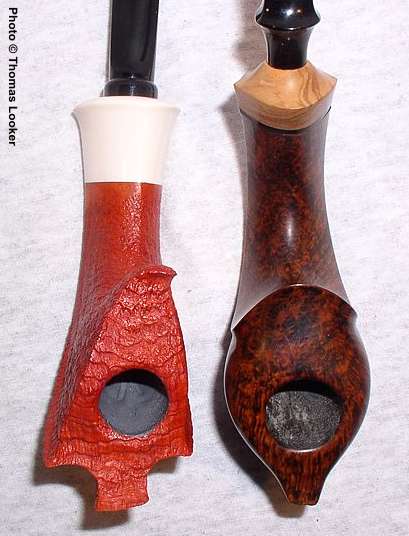
|
Another, more jaunty and informal horn by Teddy (Eagle 30, from around 2001) reveals some fascinating resonances in line and form with Tokutomi's design. |
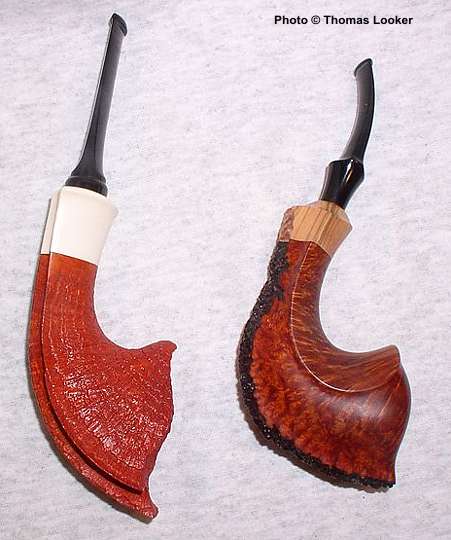

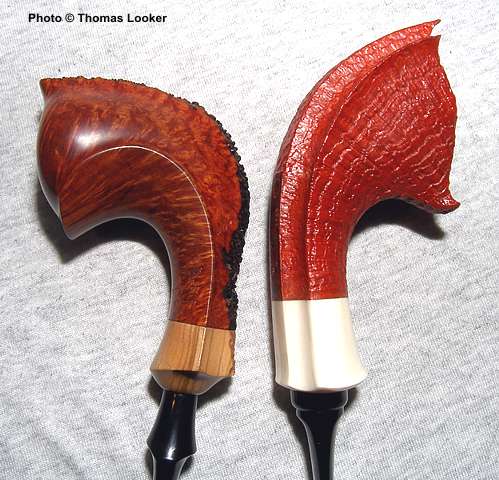
|
Along with the red horn, Tokutomi produced a smaller, companion piece in which his playfulness as a carver is even more apparent. The black sandblast horn (SPC 339) pushes the form of the horn-with-ridged-bottom to even greater extremes. Yet the composition retains a wonderful integrity, along with Tokutomi's characteristic fluidity and sense of fun. I laughed out loud when I first saw the extended goatee (which starts to look more like a tongue) rising above the front of the bowl ... in part because I could imagine that Teddy would have the same reaction. |

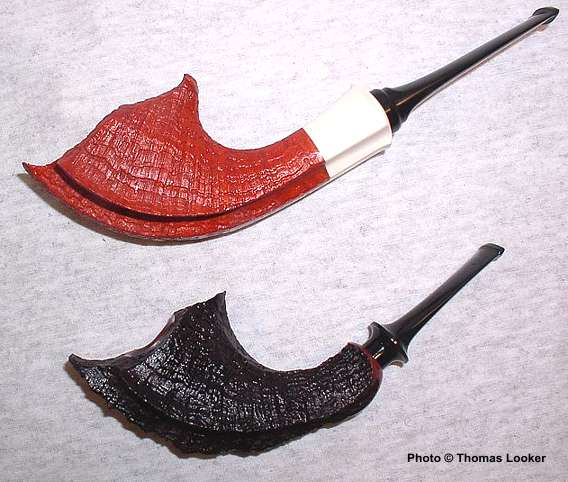

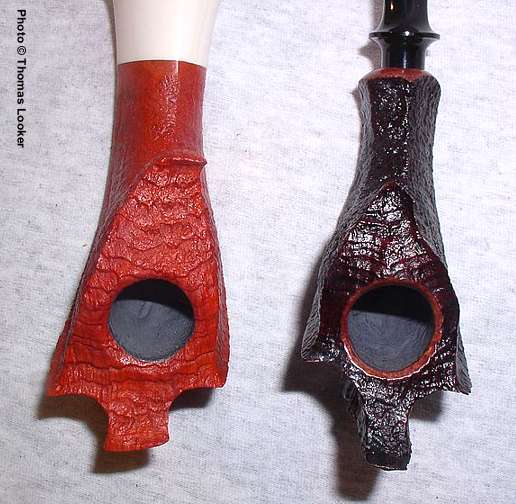
|
The extension of SPC 339's bottom ridge into a tongue is clearly a product of what I might call Tokutomi-san's "elegant playfulness with briar." But note also the lovely undulation along the top of the bowl that this briar extrusion produces. Now "the tongue" becomes part of a longer wave stretching along the front and back of the bowl and working with them to create a feeling of movement upwards and outwards ... like a cornucopia rippling with promise, or, indeed, like a briar horn playing music. |

|
|
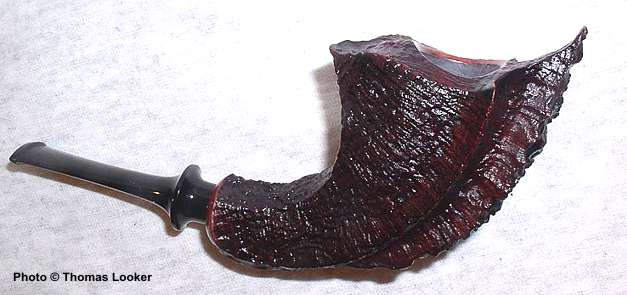
|
These lines of energy are also present in Teddy's original design, if in a more subdued and classical ("symmetrical?") style. Here's the Eagle 38 again. Note the double-curves along the back and the rippling line across the top of the bowl. |
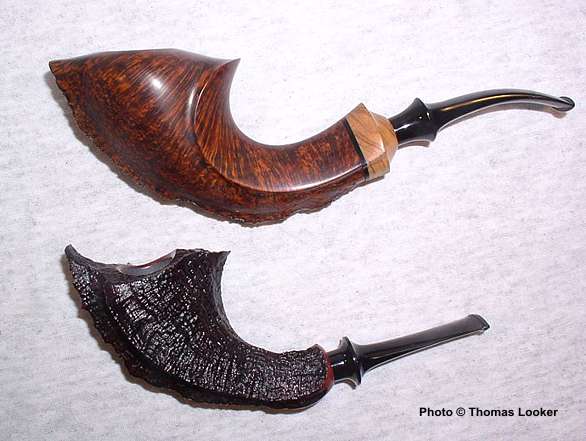

|
In the labels of the second picture, below, I compress some first thoughts about resonances between the Teddy Eagle 30 and Tokutomi's black sandblast horn. |
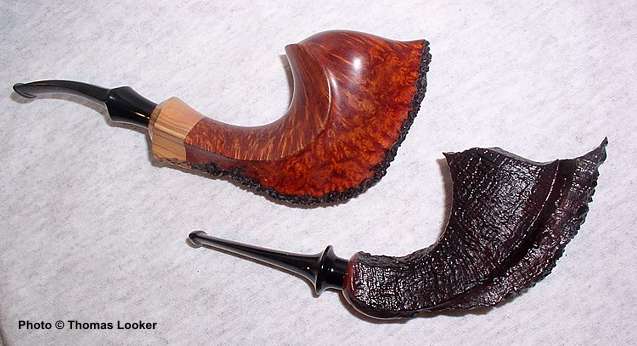
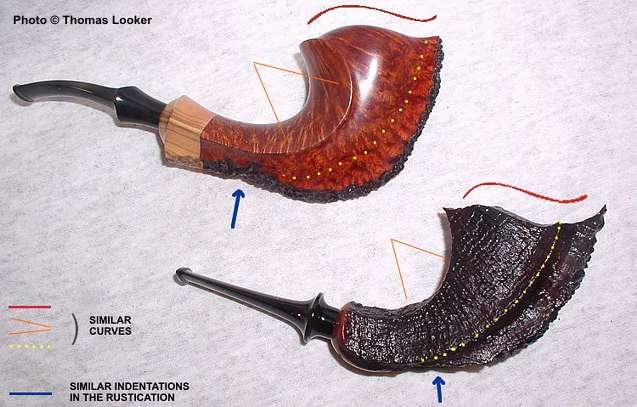
|
These pipes illustrate once again the imaginative affinity I feel within the work of these wonderful carvers. To my eye (and ear), "their pipes make beautiful music together" ... |
|
CODA: At the same time that Tokutomi was "playing these riffs" on themes by Teddy, another part of his imagination was improvising a whole new form out of these same elements ... the Manta. The creative origins for this shape lie deep within Toku's own wells of inspiration, and something of the essential differences between the Danish and the Japanese carver might be seen in the following photograph, where we can see dramatically how Toku extends and flattens out the sides of the horn-bowl into edges, twists the central axis of the pipe more than he ever has before, and widens the bottom ridge ... thus remolding, as though it were clay, the face of the "Teddy horn with goatee" into another animal entirely: |

MORE PICTURES OF TOKU'S FIRST MANTA BEGIN ON THE NEXT PAGE
NAVIGATION
END OF
BRIEF HISTORY OF THE MANTA SHAPE - 2